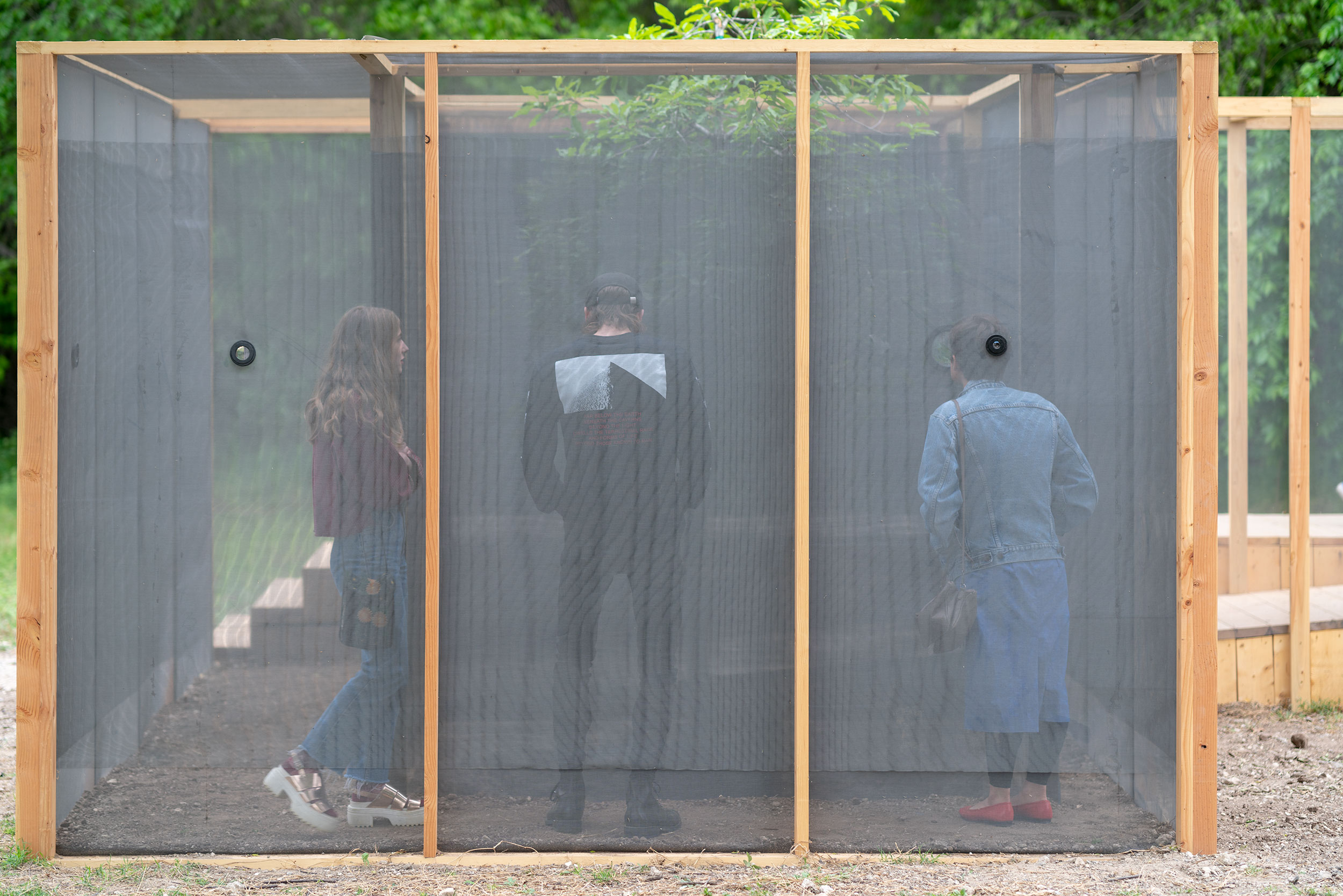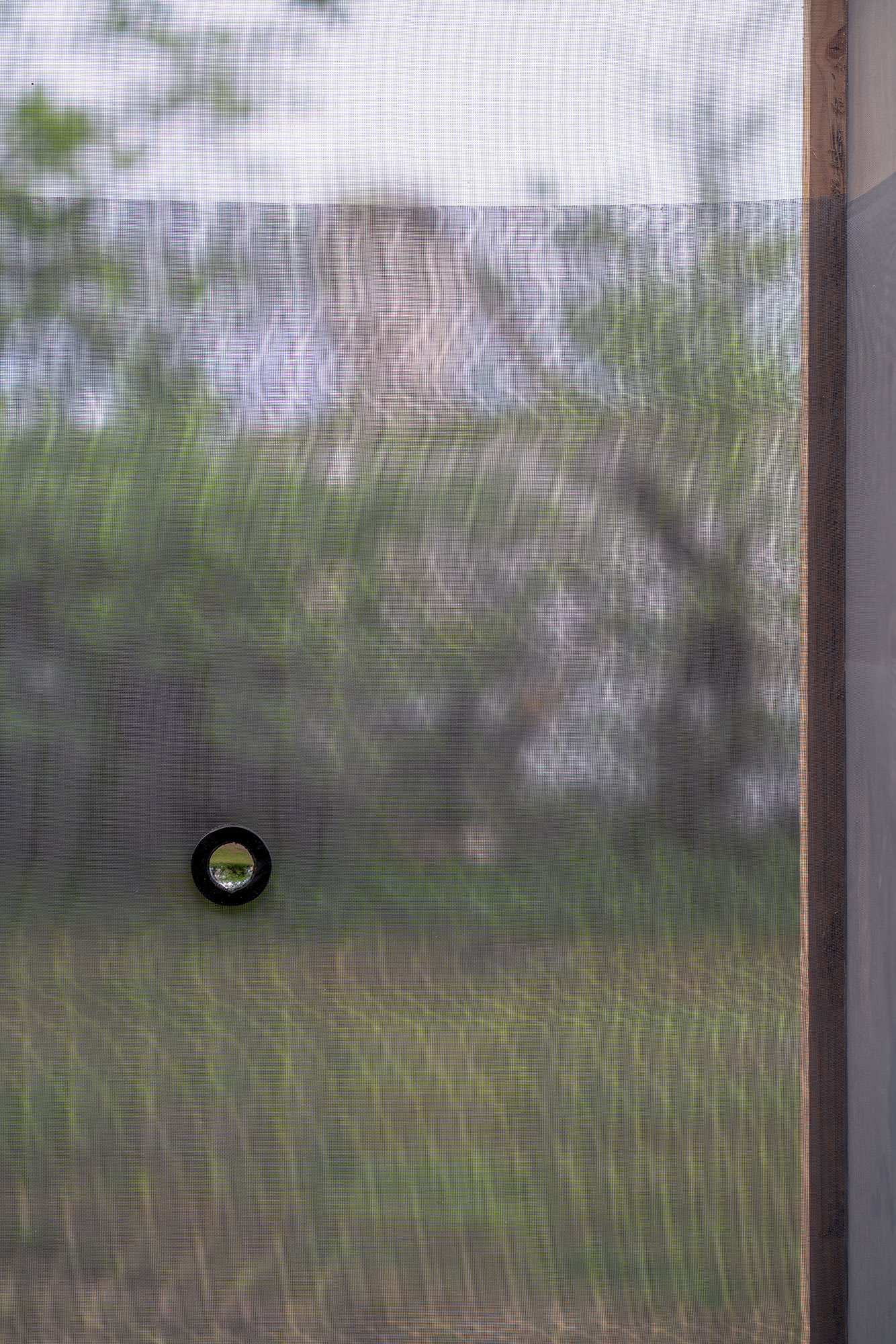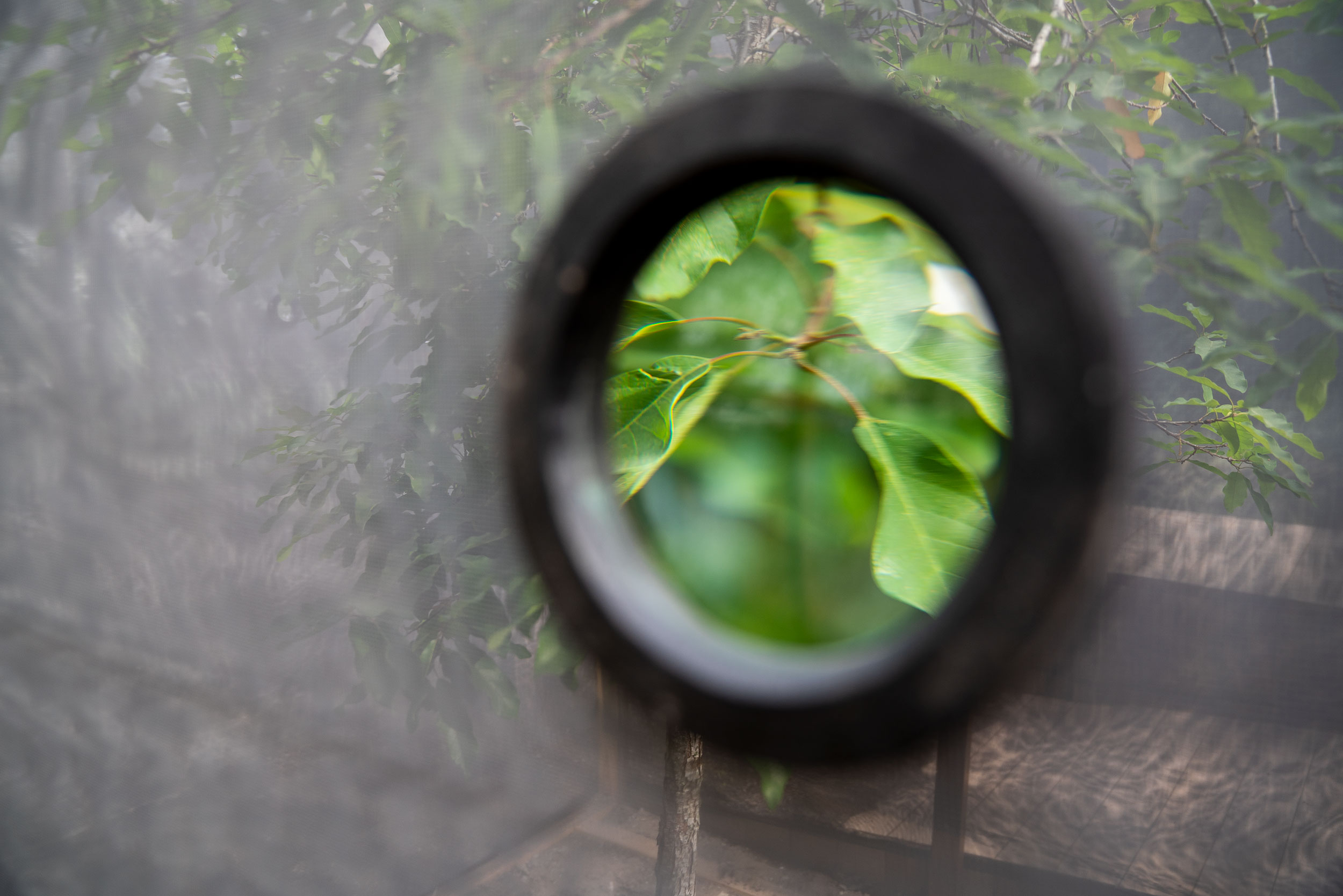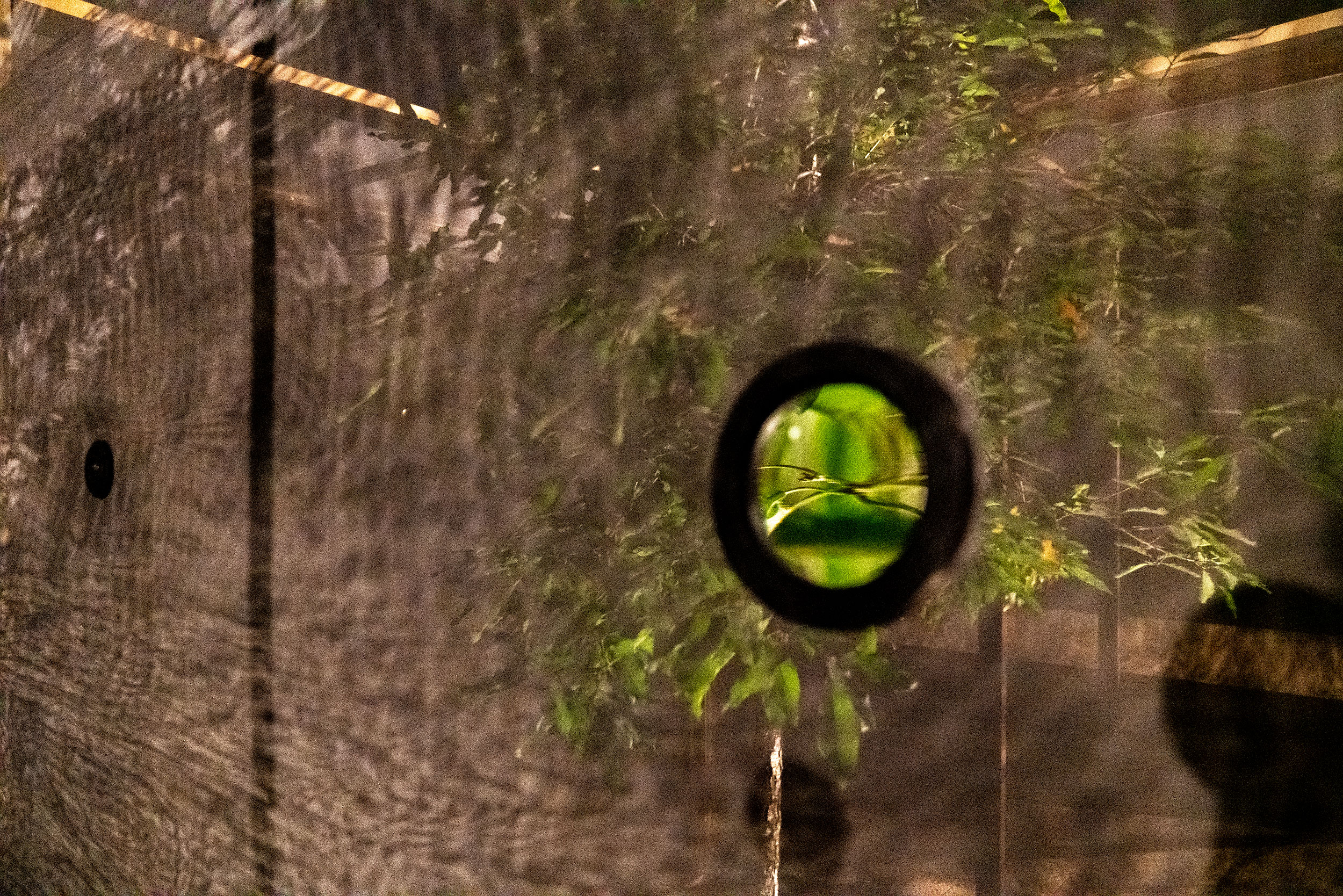Grounded in Culver
Screen, 2x4’s, lenses, Monteray oak tree, birdfeeder28’ x 18’ x 8’
2019
This installation was created for an abandoned lot in East Austin that was recently bought by a gallery space. The architectural installation, built from screen and lenses, focuses the viewer on the ethics of looking by creating an experience where the viewer is at once the watcher and the watched. Brought through a series of focused and obscured viewpoints, the viewer is led to reflect on how their vantage point affects how and what they see.








The narrative below describes a story from the original site and its translation into the final work:
Working from this story, I built an installation for the gallery’s lot, looking to animate something of the tension in his words. I was interested in the shared intention of the two opposing parties, the “birdwatchers” and the man, both seeking nature as a sanctuary, a space isolated from others. In my work I am interested in the definition of the word “nature” and the implications of its articulation; in his story, the birdwatchers restrict natural to mean a kind of ecological sanctuary, one that has no room for another human body; in this reduction there is an act of violence. The architectural installation, built from screen and lenses, creates an experience where the viewer is at once the watcher and the watched. The circular motion through the work curates a physical and visual restriction, one that does not lead to a culminating moment, but instead acts as a series of focused and obscured viewpoints.